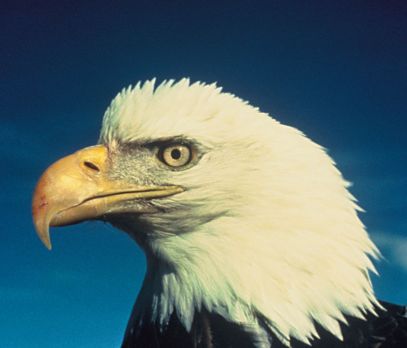
We've heard of a person being eagle-eyed, with the implication of far sharper sight than ordinary. This common knowledge is right on, for eagles and most other birds outdo mammals.
There are several reasons. For one, bird eyes are relatively large for their size, which results in larger and sharper images. Whereas human eyes weigh less than 1% of their head weight, eyes make up about 15% of head weight in many birds. However, it's the light-sensitive retina that makes the biggest difference. The light receptors, the rods and cones, are both more numerous and more tightly packed in most birds than in mammals. Just as the number of pixels on a computer screen determines the sharpness of images, so the number of receptors sets the sharpness of vision.
The fovea of the eye is the area of most acute sight. In the champion
among birds, the fovea has some eight times as many visual cells per area as we do. So,
next time you see one of our desert birds, remember—it sees you much
clearer.

Contributor: Arthur H. Harris, Laboratory for Environmental Biology, Centennial Museum, University of Texas at El Paso.
Desert Diary is a joint production of the Centennial Museum and KTEP National Public Radio at the University of Texas at El Paso.

Bald Eagle. Image by Mike Lockart, courtesy of U.S. Fish and Wildlife Service.
Welty, J. C. 1982. The life of birds. Third Ed., Saunders College Publishing, Philadelphia. 754 pp.